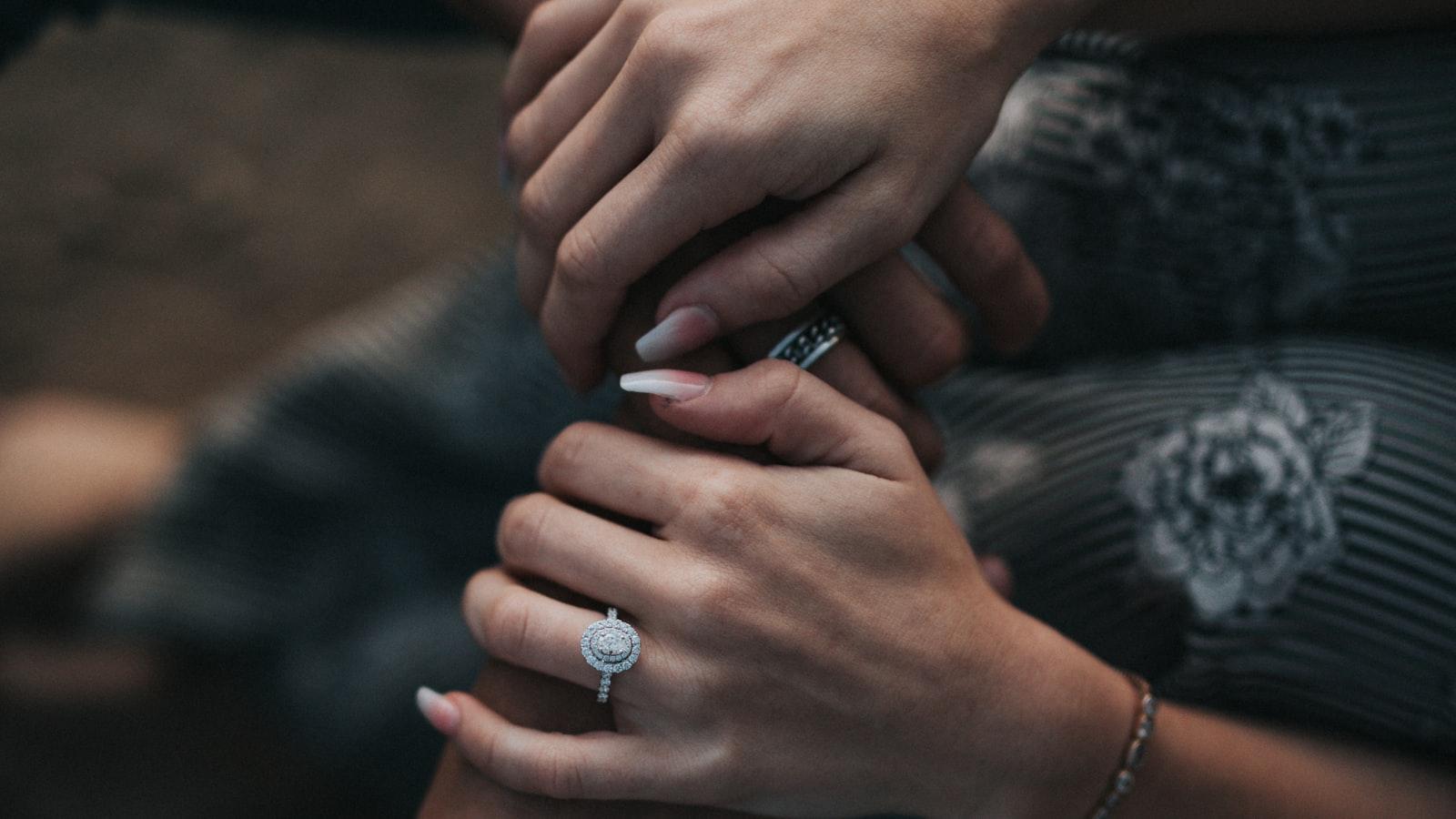Feeling your best often means tackling personal grooming woes, and for those with sensitive skin, the prospect of laser hair removal can be both enticing and daunting. Imagine the liberation of smooth, hair-free skin without the constant struggle of shaving, waxing, or plucking, but with the assurance that your delicate skin will be well-cared for. If you’ve been hesitant to take the plunge, this article is your beacon of hope. We’ve compiled essential tips to guide you through the process of laser hair removal, ensuring that your experience is as gentle and effective as possible. Read on to discover how you can achieve silky, irritation-free skin safely and confidently.
Table of Contents
- Choosing the Right Laser for Sensitive Skin
- Pre-Treatment Preparation: What to Do Before Your Session
- Post-Treatment Care: Essential Steps for Sensitive Skin
- Common Side Effects and How to Minimize Them
- Natural Remedies to Soothe and Heal Skin After Treatment
- Q&A
- In Summary
Choosing the Right Laser for Sensitive Skin
When dealing with sensitive skin, the choice of laser is pivotal for a comfortable and effective hair removal experience. Sensitivity can lead to irritation, redness, and discomfort, which necessitates a careful selection of laser types tailored to minimize adverse reactions. Here, we delve into the lasers most suitable for sensitive skin and what makes them stand out.
This is where the types of lasers come in handy:
- Diode Lasers: Known for their precision, diode lasers are excellent for darker hair and are generally gentle on sensitive skin. They penetrate the hair follicle deeply, reducing the risk of skin damage.
- Nd:YAG Lasers: Ideal for a wide range of skin tones, the Nd:YAG laser is particularly favored for its safety profile on sensitive skin. It has a longer wavelength, which lowers the risk of hyperpigmentation.
- Alexandrite Lasers: Fast and efficient, Alexandrite lasers are a popular choice. However, they are typically better suited for lighter skin tones and may require a cautious approach for sensitive skin due to their higher melanin absorption.
To further dissect the specifics, let’s look at a comparative table of these lasers tailored for sensitive skin:
| Laser Type | Skin Tone Compatibility | Comfort Level |
|---|---|---|
| Diode Laser | Light to Medium | High |
| Nd:YAG Laser | All Skin Tones | Medium |
| Alexandrite Laser | Light | Medium to High |
When selecting the right laser, it’s crucial to have an in-depth discussion with a certified laser technician. They will assess your skin type, sensitivity level, and hair color to determine the most suitable laser. Preventive measures and tailor-made treatment plans can significantly reduce the risk of skin irritation and ensure a more comfortable session.
Remember, your skin is unique and deserving of personalized care. By making informed choices and understanding the various laser options available, you can achieve smooth, hair-free skin without compromising on comfort. Embrace the journey towards hair-free bliss, knowing you’ve chosen wisely for your sensitive skin.

Pre-Treatment Preparation: What to Do Before Your Session
Hydrate Your Skin: Ensuring your skin is well-hydrated is essential for a successful laser hair removal session, especially if you have sensitive skin. Drink plenty of water in the days leading up to your appointment, and apply a nourishing moisturizer daily. Avoid using any thick creams or lotions on the day of your session as they can interfere with the laser.
Avoid Sun Exposure: Protecting your skin from sun exposure is crucial. UV rays can increase skin sensitivity and the risk of side effects. Make sure to stay out of the sun or use a high-SPF, broad-spectrum sunscreen on any areas to be treated for at least two weeks before your session. If you’re unable to avoid the sun, discuss this with your practitioner for personalized advice.
Shave, Don’t Wax: Shaving the treatment area is important, but avoid waxing, plucking, or threading as these methods remove the hair follicle, which the laser needs to target. Shave the treatment area 24-48 hours before your appointment to ensure your skin has enough time to calm down and reduce irritation. Use a gentle shaving cream, and follow up with a calming aftershave lotion.
Medications and Skincare Products: Certain medications and skincare products can make your skin more sensitive to the laser. Inform your technician of any medications you’re taking, including over-the-counter options and supplements. Here’s a quick rundown to follow:
- Avoid topical retinoids and glycolic acid for at least 2 weeks before treatment.
- Refrain from using bleaching or lightening agents on the treatment area.
- Discontinue any use of exfoliating scrubs or peels a week before your session.
- Steer clear of makeup, deodorant, or perfumes on the day of your treatment.
For best results, arrive at your appointment with clean, product-free skin, ready for a safe and effective session.

Post-Treatment Care: Essential Steps for Sensitive Skin
Caring for sensitive skin after laser hair removal is a delicate process that requires extra attention and dedication. Hydration is the cornerstone of an effective post-treatment regimen. Ensure your skin stays well-moisturized by using gentle, fragrance-free products designed for sensitive skin. Aloe vera gel and soothing balms can provide much-needed relief and help reduce irritation. Drinking plenty of water will also assist in keeping your skin hydrated from the inside out.
Exposure to sunlight can be especially harmful to freshly treated skin. Protect your skin by avoiding direct sunlight and using a broad-spectrum sunscreen with SPF 30 or higher whenever you need to go outdoors. Wearing protective clothing such as wide-brimmed hats and long sleeves can also shield your sensitive skin from harmful UV rays. Remember, sunlight can exacerbate redness and increase the risk of hyperpigmentation.
Incorporating a gentle skincare routine is essential for preventing post-treatment complications. Use mild cleansers that do not strip your skin of its natural oils, and steer clear of exfoliants, retinoids, and any harsh treatments for at least a week post-laser treatment. Pat your skin dry instead of rubbing it to avoid additional irritation. Opt for lukewarm water rather than hot water when cleansing your face or taking a shower.
Here’s a quick guide to other skincare dos and don’ts post-laser treatment:
| Do’s | Don’ts |
|---|---|
| Use cool compresses to soothe the skin. | Avoid touching or scratching the treated area. |
| Wear loose, breathable clothing to reduce friction. | Steer clear of saunas and hot baths. |
| Use hypoallergenic products. | Avoid makeup for the first 24-48 hours. |

Common Side Effects and How to Minimize Them
Laser hair removal for sensitive skin often brings with it certain side effects that, while common, can typically be managed effectively. Redness and Swelling are perhaps the most usual reactions post-treatment. These symptoms usually subside within a few hours, but applying a cool compress can help soothe the skin. It’s also beneficial to use an anti-inflammatory cream prescribed by your dermatologist to reduce any lingering discomfort.
To prevent Hyperpigmentation and Hypopigmentation, avoid sun exposure before and after the treatment. Wearing sunscreen with a high SPF is crucial even on cloudy days. An additional tip is to opt for laser treatments designed specifically for sensitive skin, such as diode or Nd:YAG lasers, which tend to be gentler while still effective. Consulting with a certified laser technician ensures you receive the appropriate wavelength for your skin type.
Another potential issue is Skin Irritation and Blistering. To keep your skin calm, refrain from using any harsh skincare products a few days before and after your session. Fragrance-free and alcohol-free moisturizers will keep your skin hydrated without exacerbating irritation. If blisters occur, do not pop them; instead, apply an antibiotic ointment and cover them with a clean bandage.
Keep in mind these Additional Tips to minimize side effects:
- Hydrate: Drink plenty of water to keep your skin hydrated from within.
- Avoid Heat: Steer clear of hot baths, saunas, and intense exercise for at least 24 hours post-treatment.
- Gentle Cleansing: Use a mild cleanser to wash the treated area and pat it dry gently.
| Common Side Effect | Relief Measures |
|---|---|
| Redness & Swelling | Cool Compress, Anti-inflammatory Cream |
| Hyperpigmentation | Sunscreen, Avoid Sun Exposure |
| Skin Irritation | Fragrance-free Moisturizer, Gentle Cleansing |

Natural Remedies to Soothe and Heal Skin After Treatment
After undergoing laser hair removal, especially if you have sensitive skin, it’s crucial to turn to nature’s soothing remedies to calm and heal your skin. This not only speeds up the recovery process but also helps in maintaining the integrity of your skin. Aloe Vera is a powerful go-to. Its anti-inflammatory properties are beneficial in reducing redness and irritation. Simply apply a thin layer of aloe vera gel on the treated areas for a delightful cooling effect. Another fantastic option is coconut oil, which naturally moisturizes and repairs the skin barrier. Make sure to use organic, cold-pressed coconut oil to maximize its benefits.
Calendula and Rosehip Oil are also excellent for post-treatment skin care. Calendula’s anti-inflammatory and antibacterial traits can dramatically reduce skin discomfort. Use a calendula-infused lotion or oil for the best results. Rosehip oil, on the other hand, is rich in vitamins A and C, and essential fatty acids, making it an ideal candidate for skin regeneration. Gently massage a few drops into your skin to promote healing and reduce any potential scarring or pigmentation.
Incorporating herbal tea compresses can work wonders too. Chamomile and green tea compresses are especially effective thanks to their soothing and antioxidant properties. Brew the tea, let it cool, and then soak a clean cloth in it. Apply the compress to the affected area for about 15 minutes. This method can significantly reduce swelling and irritation. Additionally, oatmeal baths are another gentle way to comfort your skin. Oatmeal is rich in avenanthramides, compounds that reduce inflammation and itching. Add a cup of finely ground oatmeal to your bath water and soak for 20 minutes for optimal relief.
| Natural Remedy | Benefits |
|---|---|
| Aloe Vera | Anti-inflammatory, Cooling Effect |
| Coconut Oil | Moisturizing, Skin Barrier Repair |
| Calendula | Anti-inflammatory, Antibacterial |
| Rosehip Oil | Skin Regeneration, Reduces Scarring |
| Chamomile Tea Compress | Soothing, Reduces Swelling |
| Oatmeal Bath | Reduces Inflammation, Relieves Itching |
The importance of post-treatment skin care cannot be overstated, particularly if your skin tends to be on the sensitive side. Ensure to hydrate and protect your skin consistently. Make hydration a priority not only externally with beneficial oils and lotions but also internally by drinking ample water and consuming hydrating foods like cucumber and watermelon. don’t forget to protect your healing skin from sun exposure. Wearing a broad-spectrum SPF and protective clothing can prevent further sensitivity or damage, ensuring your skin stays radiant and healthy.
Q&A
Q: What makes laser hair removal suitable for sensitive skin?
A: Laser hair removal can be an excellent option for those with sensitive skin because it’s a non-invasive procedure that targets hair follicles without causing significant damage to the surrounding skin. Modern laser technologies are designed to minimize discomfort and reduce the risk of irritation, making them safer and more effective for all skin types, including sensitive skin.
Q: What should people with sensitive skin consider before undergoing laser hair removal?
A: It’s essential to consult with a qualified dermatologist or licensed technician who has experience with sensitive skin. They can recommend the best type of laser for your skin type and hair color, as well as conduct a patch test to ensure that your skin reacts positively to the treatment. Look for clinics that specialize in treating sensitive skin and have a strong track record of success.
Q: Are there specific types of lasers that are better for sensitive skin?
A: Yes, certain lasers are more suited for sensitive skin. For example, the Alexandrite laser and the Nd:YAG laser are often recommended for their effectiveness and lower risk of causing hyperpigmentation or burns. The right laser for you will depend on your skin tone and hair type, so a personalized assessment is crucial.
Q: How can someone with sensitive skin prepare for a laser hair removal session?
A: Preparation is key to minimizing discomfort and maximizing results. Avoid sun exposure and tanning beds for at least two weeks before your treatment, as tanned skin is more prone to adverse reactions. Also, refrain from using any harsh skincare products or exfoliants a few days before your session. Hydrate your skin well and follow any specific pre-treatment instructions given by your provider.
Q: What should be done immediately after a laser hair removal session?
A: After your session, it’s vital to take care of your skin to promote healing and reduce irritation. Apply a cold compress or soothing gel, like aloe vera, to calm the treated area. Avoid hot showers, saunas, and strenuous exercise for at least 24-48 hours, as heat can exacerbate redness and swelling. Also, continue to protect your skin from the sun by using a broad-spectrum sunscreen with SPF 30 or higher.
Q: How many sessions are typically needed for effective results, especially for sensitive skin?
A: The number of sessions required can vary, but most people need between 6 to 8 treatments for optimal results. Because sensitive skin may react differently, it’s essential to allow adequate time between sessions to let your skin heal properly. Your provider will create a customized treatment schedule based on your skin’s response to the laser.
Q: What are some long-term benefits of laser hair removal for people with sensitive skin?
A: The long-term benefits of laser hair removal include significant reduction in hair growth, smoother skin, and the elimination of ingrown hairs, which can be particularly troublesome for those with sensitive skin. Since the treatment targets hair at its root, it also helps reduce the irritation and inflammation often caused by traditional hair removal methods like shaving or waxing.
By being informed and taking the right precautions, individuals with sensitive skin can achieve effective and lasting results through laser hair removal, paving the way for smoother, more comfortable skin.
In Summary
navigating the world of laser hair removal can be a daunting task, especially for those with sensitive skin. However, armed with the right knowledge and preparation, you can achieve smooth, hair-free skin without compromising your skin’s health. Remember to consult with a qualified dermatologist, conduct a patch test, invest in proper aftercare, and follow all the must-know tips diligently. Your journey to feeling confident and comfortable in your skin is not just about removing hair, but about embracing a skincare routine that honors your skin’s unique needs. Empower yourself with these insights, and take a confident step towards a smoother, more radiant you. Your skin’s sensitivity is not a setback, but a call to tread carefully and with utmost care, ensuring you can glow with confidence every step of the way.






